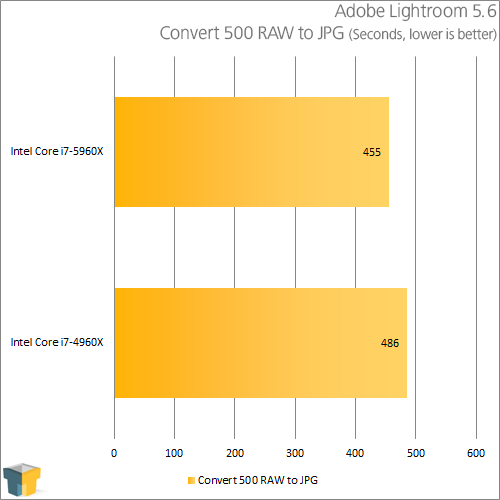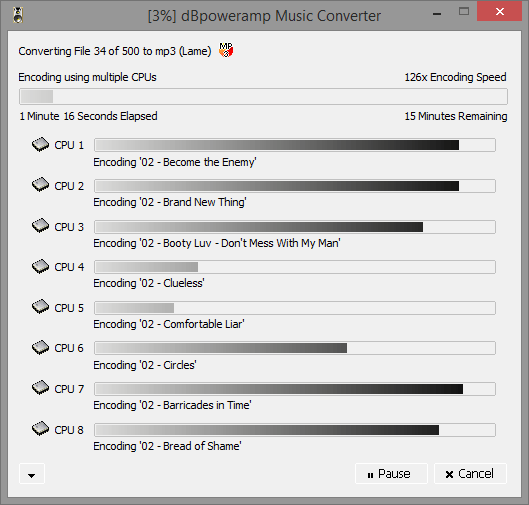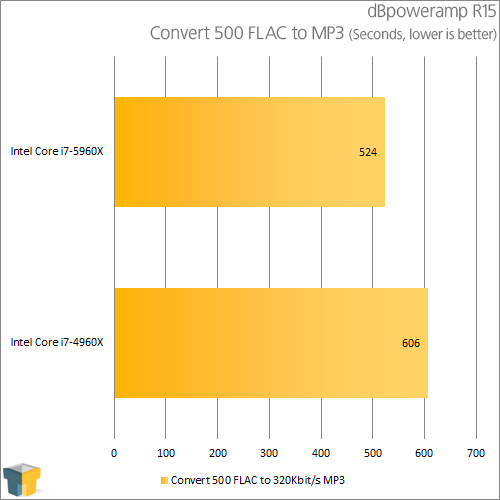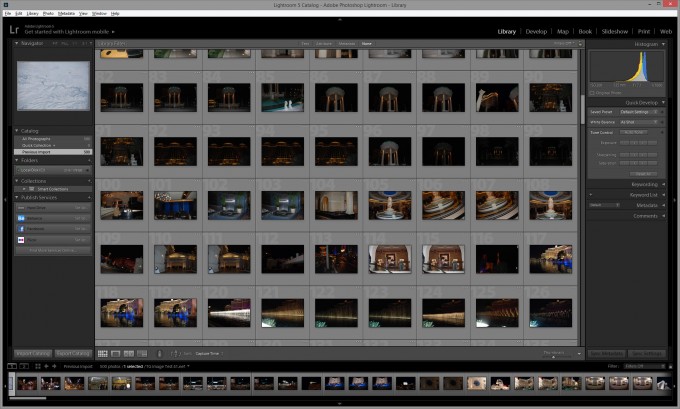- Qualcomm Launches Snapdragon 4 Gen 2 Mobile Platform
- AMD Launches Ryzen PRO 7000 Series Mobile & Desktop Platform
- Intel Launches Sleek Single-Slot Arc Pro A60 Workstation Graphics Card
- NVIDIA Announces Latest Ada Lovelace Additions: GeForce RTX 4060 Ti & RTX 4060
- Maxon Redshift With AMD Radeon GPU Rendering Support Now Available
Core i7-5960X Extreme Edition Review: Intel’s Overdue Desktop 8-Core Is Here

In late 2011, I wagered that Intel would follow-up its i7-3960X with an eight-core model within the year. That didn’t happen. Instead, we have had to wait nearly three years since that release to finally see an eight-core Intel desktop chip become a reality. Now for the big question: Was the company’s Core i7-5960X worth the wait?
Page 6 – Multi-Media: Adobe Lightroom & dBpoweramp
Photo manipulation benchmarks are more relevant than ever given the proliferation of high-end digital photography hardware. For this benchmark, we test the system’s handling of RAW photo data using Adobe Lightroom 5.6, an excellent RAW photo editor and organizer that’s easy to use and looks fantastic. You can check out our full review of the tool here.
For our testing, we take a total of 500 RAW files spread across 250 .NEFs captured with a Nikon D80 and 250 .CR2 captured across a Canon 40D and 5D Mark II. We export all of these files to a matte-sharpened quality 90 JPEG resized to a resolution of 1000×660 – similar to a lot of photos we use here on the website. The test is timed indirectly using a stopwatch as the program doesn’t record the duration itself.

Here’s good proof that more cores doesn’t mean better – or at least that much better. Despite Lightroom being a high-end editing tool, it exported our photos using the i7-5960X in 94% of the time it took the i7-4960X. That’s not exactly what I’d call much of a gain. It’s my hope that future versions of Lightroom will be designed to take far better advantage of multi-threading – there’s no reason that the results here couldn’t be as impressive as what we saw with the HandBrake test on the previous page.
dBpoweramp R15
You own hundreds, thousands, or even tens of thousands of songs, all encoded to a pristine lossless format such as FLAC. Your mobile device on the other hand, supports either MP3 or AAC. What’s the solution? There are several, but the one I’ve relied on for almost ten years has been dBpoweramp. It’s both flexible and powerful, which happen to be two important factors for those who take their music seriously.
Recent versions of dBpoweramp have opened up the ability to encode more than one track at once, up to a limit of one-per-thread. With twelve-thread CPUs on the market, that ability can greatly improve overall times. For our testing here, we take 500 unique FLAC files that average about ~30MBs and encode them using the “high-quality” setting to 320Kbit/s MP3.


Unlike Lightroom, which doesn’t do much to take advantage of hugely threaded processors, dBpoweramp does. But even in this case, with 16 threads being utilized, the gains are still only about 15%. Part of the reason for this could be due to I/O, despite using a fast SSD. It’d be fun to run this same test on a RAMDisk. That’s a test for a future time.
Support our efforts! With ad revenue at an all-time low for written websites, we're relying more than ever on reader support to help us continue putting so much effort into this type of content. You can support us by becoming a Patron, or by using our Amazon shopping affiliate links listed through our articles. Thanks for your support!






